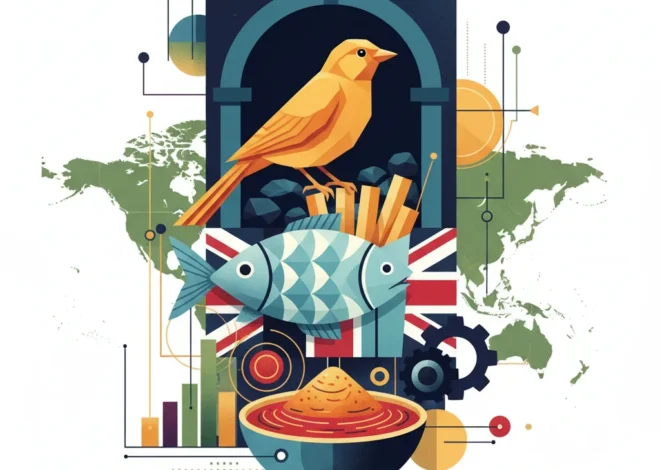
Beyond the Hype: An Investor’s Guide to the Economics of Black Friday
Once a year, the global retail landscape braces for a consumer tsunami known as Black Friday. It’s a day, now stretched into a week or even a month, synonymous with deep discounts and frenzied shopping. But for the discerning financial professional, investor, or business leader, Black Friday is more than just a chance to buy a new television. It is a powerful, real-time barometer of the economy, a masterclass in behavioral economics, and a critical test of personal financial discipline.
A recent BBC report highlighted a crucial truth that seasoned market watchers already understand: a “discount” is not always a deal. The psychology of sales often creates a mirage of value, compelling consumers to spend under the illusion of saving. This phenomenon has profound implications not just for our wallets, but for the broader financial markets, from retail stock performance to macroeconomic forecasting.
This analysis will deconstruct the Black Friday spectacle, moving beyond simple shopping tips to explore its deep connections to finance, investing, and the global economy. We will examine the psychological tactics at play, the macroeconomic signals to watch for, and how the principles of intelligent investing can be applied to navigate this period of peak consumerism with both your portfolio and personal finances intact.
The Psychology of the Sale: A Lesson in Behavioral Economics
To understand Black Friday’s economic impact, we must first understand the human behavior that drives it. Retailers are experts in behavioral economics, employing sophisticated psychological triggers to stimulate spending. These are the same biases that can often trip up even experienced traders in the stock market.
Price Anchoring and the Illusion of Value
One of the most potent tools is “price anchoring.” A retailer presents a high “original” price, which may have only been in effect for a short period, to make the discounted price seem like an extraordinary bargain. Research has consistently shown that the initial price presented serves as a powerful anchor for our perception of value. For instance, a product that was priced at $1,000 for a week before being “slashed” to $600 on Black Friday feels like a 40% saving, even if its typical market value for the rest of the year is closer to $650. This isn’t a lie, but it’s a carefully crafted truth designed to trigger a purchase decision based on perceived loss aversion—the fear of missing out on a great deal.
Scarcity and Urgency: The FOMO Engine
“Limited stock!” and “Deal ends in 2 hours!” are not just informational messages; they are powerful drivers of urgency. This manufactured scarcity taps into the Fear of Missing Out (FOMO), a potent emotional trigger that can override rational financial analysis. In the world of trading, FOMO can lead investors to chase speculative rallies and buy assets at inflated prices. In the retail world, it leads consumers to make unplanned purchases, often financed by debt, eroding long-term financial health for short-term gratification.
From Local Advice to Global Markets: Decoding the Economic Signals Behind Your Heating Bill
A Disciplined Approach: Applying Investment Principles to Consumerism
The same principles that define a successful investment strategy—due diligence, value assessment, and emotional discipline—are the best defense against the psychological onslaught of Black Friday. A savvy consumer acts less like a frantic shopper and more like a value investor conducting thorough research before deploying capital.
Before any major purchase, a fundamental analysis is required. This involves ignoring the percentage discount and focusing on the absolute price. Is this item a need or a want? Does its price align with its intrinsic value to you? A crucial part of this due diligence involves leveraging financial technology. Price comparison websites and browser extensions that track an item’s price history are the consumer’s equivalent of an analyst’s terminal. These tools strip away the marketing narrative and reveal the data: was the product cheaper three months ago? According to consumer group Which?, a staggering 98% of last year’s Black Friday “deals” were available for the same price or cheaper in the six months following the event.
To help navigate this, consider the following strategic framework, which contrasts common retail tactics with disciplined financial counter-moves.
| Retailer Tactic (Behavioral Trigger) | The Financially Disciplined Response |
|---|---|
| Price Anchoring: “Was $999, Now $599!” | Conduct Due Diligence: Use price history trackers (e.g., CamelCamelCamel, PriceRunner) to verify the product’s actual price trend over the past 6-12 months. Focus on the absolute price, not the discount percentage. |
| Manufactured Scarcity: “Only 3 left in stock!” | Assess True Need: Have a pre-defined shopping list based on actual needs. The urgency of a deal should not create a need that didn’t exist before. |
| Bundling: “Buy a camera, get a bag and memory card for 50% off!” | Isolate and Value Each Component: Calculate the cost of each item in the bundle if purchased separately. Often, the bundled items are high-margin accessories that inflate the total cost. |
| “Buy Now, Pay Later” (BNPL) Offers: Spread the cost over 4 interest-free payments. | Prioritize Cash Flow: While BNPL can be a useful tool if managed perfectly, it can obscure the total cost and encourage overspending. If the purchase doesn’t fit in your current budget, it’s a liability, not an asset. |
Black Friday as a Macroeconomic Bellwether
For investors, economists, and finance professionals, Black Friday and the subsequent Cyber Monday are critical data points that offer a snapshot of the health of the economy. The results are scrutinized for insights into several key areas:
- Consumer Confidence: High spending volumes can signal strong consumer confidence and a willingness to spend on discretionary goods. Conversely, a slump in sales, or a shift towards heavily discounted essential items, can indicate economic anxiety and tightening household budgets. This data directly informs economic forecasting models.
- Inflationary Impact: In a high-inflation environment, analysts watch to see if consumers are “trading down” to cheaper brands or simply buying less. The level of discounting can also offer clues about retailers’ inventory levels and their pricing power. Are they clearing excess stock at a loss, or are they able to hold prices firm?
- Retail Sector Health: The performance of bellwether stocks in the retail and e-commerce sectors (e.g., Amazon, Walmart, Target) is heavily tied to holiday season performance. Strong sales can provide a significant boost to the stock market, particularly for Q4 earnings reports, while weak numbers can trigger a sector-wide sell-off.
- Payment Trends and Fintech Adoption: The transaction data provides invaluable insight into the evolution of banking and payments. The market share of credit cards versus debit cards, the growth of digital wallets, and the adoption rate of BNPL services are all closely monitored by the financial technology industry. These trends can signal shifts in consumer credit habits and the competitive landscape for traditional banking institutions.
For example, a surge in BNPL usage might suggest that while consumers are still willing to spend, their liquid cash flow is under pressure—a crucial nuance for those analyzing the credit market and consumer debt levels. This level of granular analysis is where the real economic story of Black Friday is told. According to one survey, nearly a third of shoppers planned to use BNPL services during the holiday season (source), a significant indicator for the fintech sector.
The Future of Commerce: Technology’s Role in a Transparent Marketplace
The cat-and-mouse game between retailers and consumers is increasingly being shaped by technology. While retailers use AI and big data to personalize marketing and optimize pricing, consumers have a growing arsenal of fintech tools to fight back. As we look ahead, emerging technologies could further shift the balance of power.
Imagine a future where blockchain technology provides an immutable ledger for a product’s price history, making deceptive price anchoring impossible. This level of transparency in the supply chain could also be used to verify the authenticity of luxury goods, a major concern during sales events where counterfeit products can flood the market. While not yet mainstream, such applications of financial technology could fundamentally reshape the retail landscape into a more transparent and equitable marketplace. The integration of such technologies is a key area of interest for those involved in venture capital and tech-focused investing.
Beyond the Headlines: Decoding the £22 Energy Bill Drop and Its Ripple Effect on the UK Economy
Conclusion: From Mindless Consumer to Intelligent Allocator
Black Friday is a microcosm of the modern economy—a complex interplay of psychology, technology, and market forces. For the average person, it is a day of potential bargains and definite temptation. But for those with a financial mindset, it is an annual case study in action.
By understanding the behavioral economics at play, leveraging financial technology for due diligence, and observing the event through a macroeconomic lens, we can transform our relationship with it. The goal is not simply to get a “good deal,” but to make conscious, value-driven decisions that align with our long-term financial objectives. Whether you are managing a personal budget, a corporate balance sheet, or an investment portfolio, the lessons of Black Friday are the same: look past the hype, do your own research, and never let emotion dictate your financial strategy. True wealth is built not on the discounts you get, but on the disciplined decisions you make.


